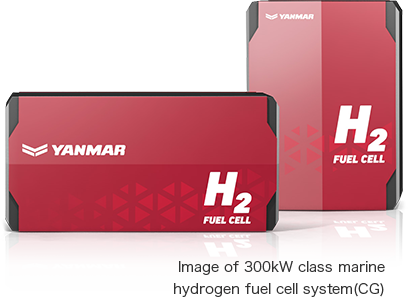জাহাজ থেকে বায়ু দূষণকারী এবং GHG নির্গমন।
In the maritime sector, the International Maritime Organization adopted a GHG reduction strategy in 2018, aiming to achieve zero emissions from international marine transportation as early as possible this century, as well as to improve emissions per unit of transport by at least 40% by 2030 and reduce total GHG emissions by at least 50% by 2050, both compared to 2008 levels. Recently, there have been discussions about moving up the schedule. At the same time, there are movements towards reducing NOX emissions in urban areas, environmentally protected areas, and large ports especially in Europe and the U.S. Unlike internal combustion engines, hydrogen fuel cells emit only water and do not emit any greenhouse gases such as carbon dioxide (CO2) or air pollutants such as nitrogen oxides (NOX)… On the other hand, it is necessary to develop new technology to comply with the operating environment and safety regulations of ships. In addition, to commercialize the technology, it is necessary to consider hydrogen refueling methods.
পরবর্তী প্রজন্মের শক্তি হিসাবে "হাইড্রোজেন" এর সুবিধা
- পৃথিবীতে প্রচুর।
- এটি সৌর, বায়ু, বা জিওথার্মালের মতো পুনর্নবীকরণযোগ্য শক্তির উত্স দ্বারা উত্পন্ন জল এবং বিদ্যুৎ থেকে উত্পাদিত হতে পারে।
- ব্যবহারের সময় কোন CO 2 নির্গমন নেই।



























